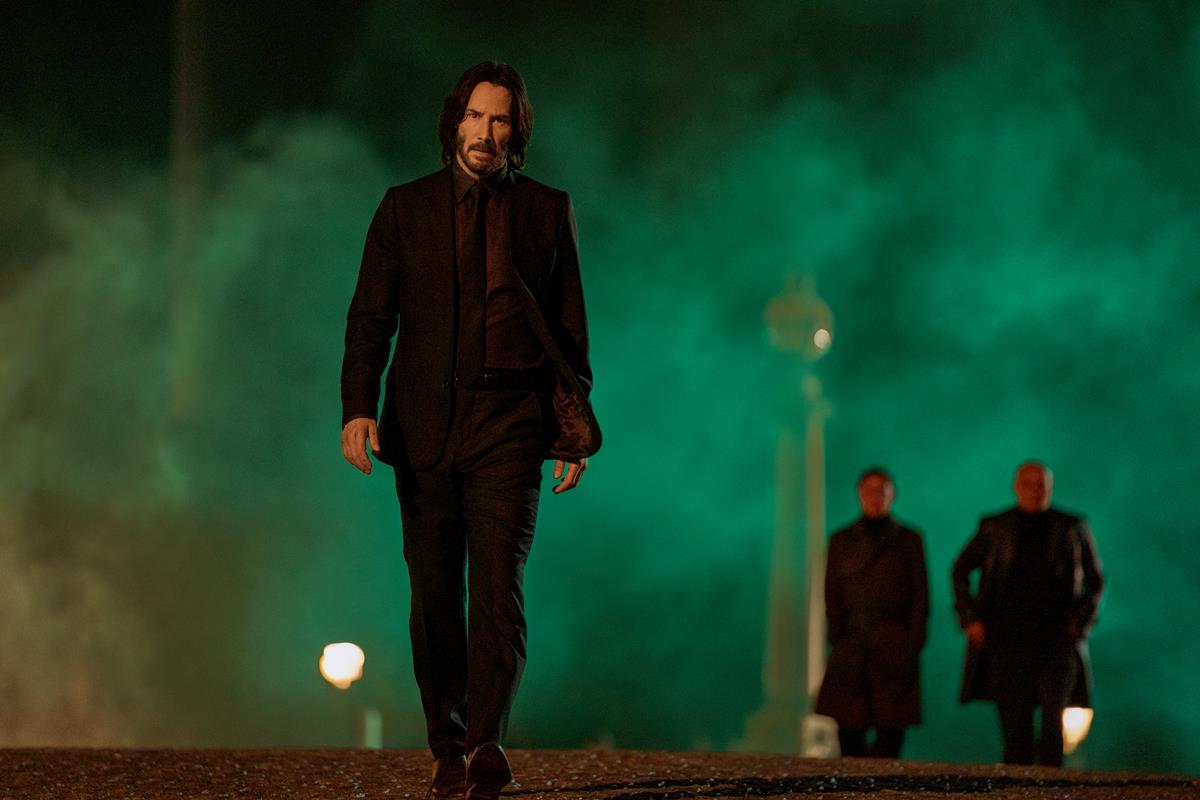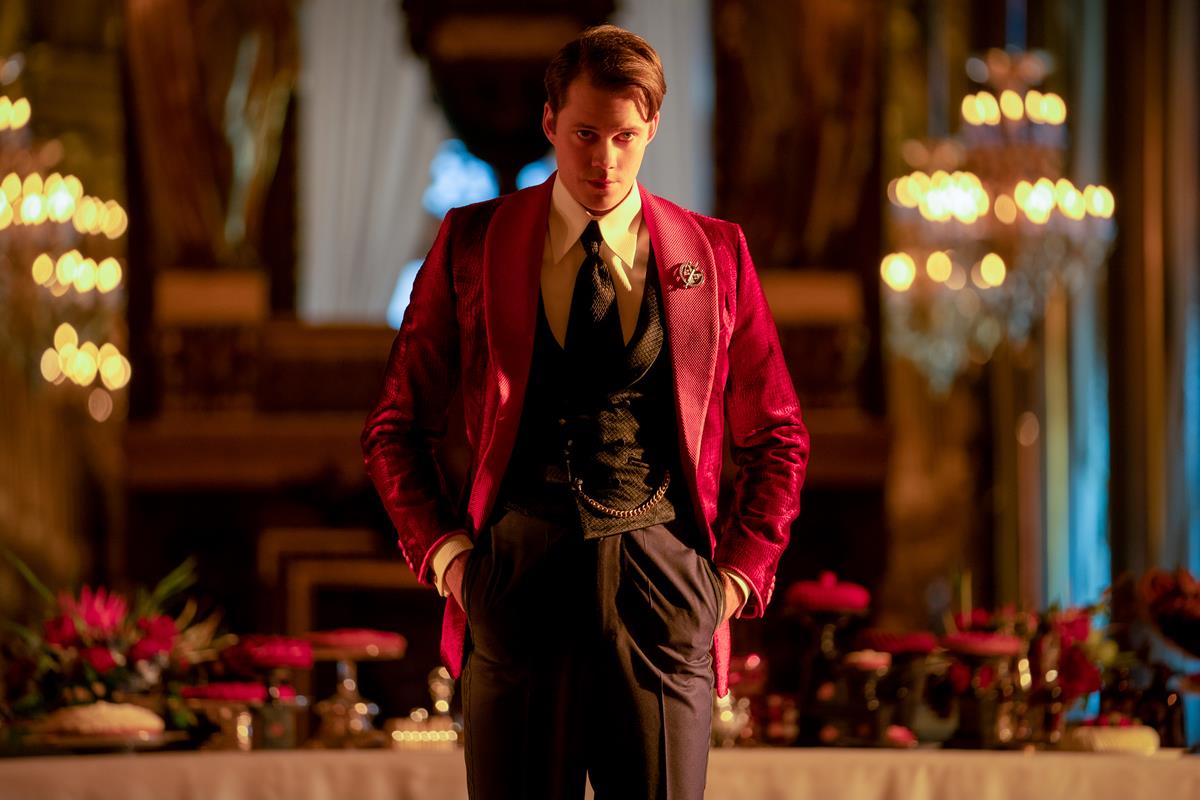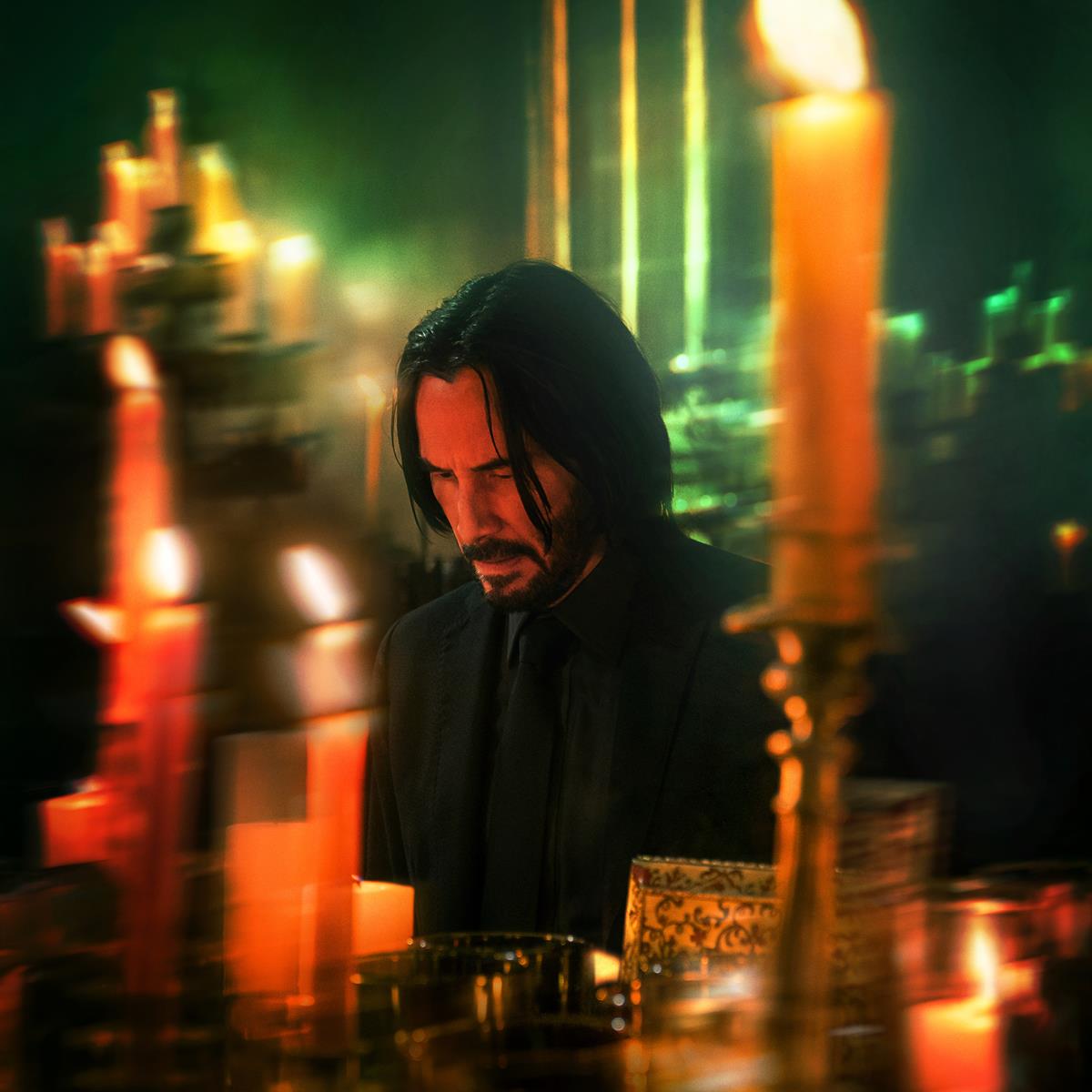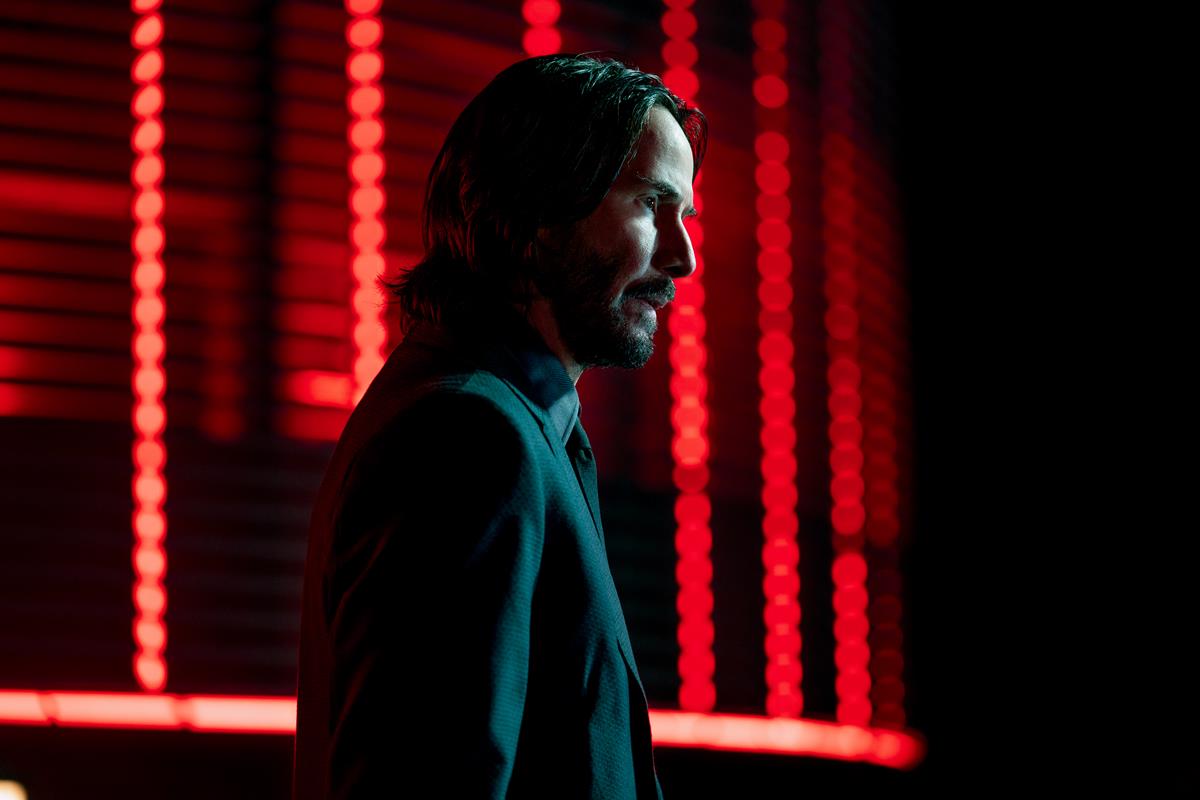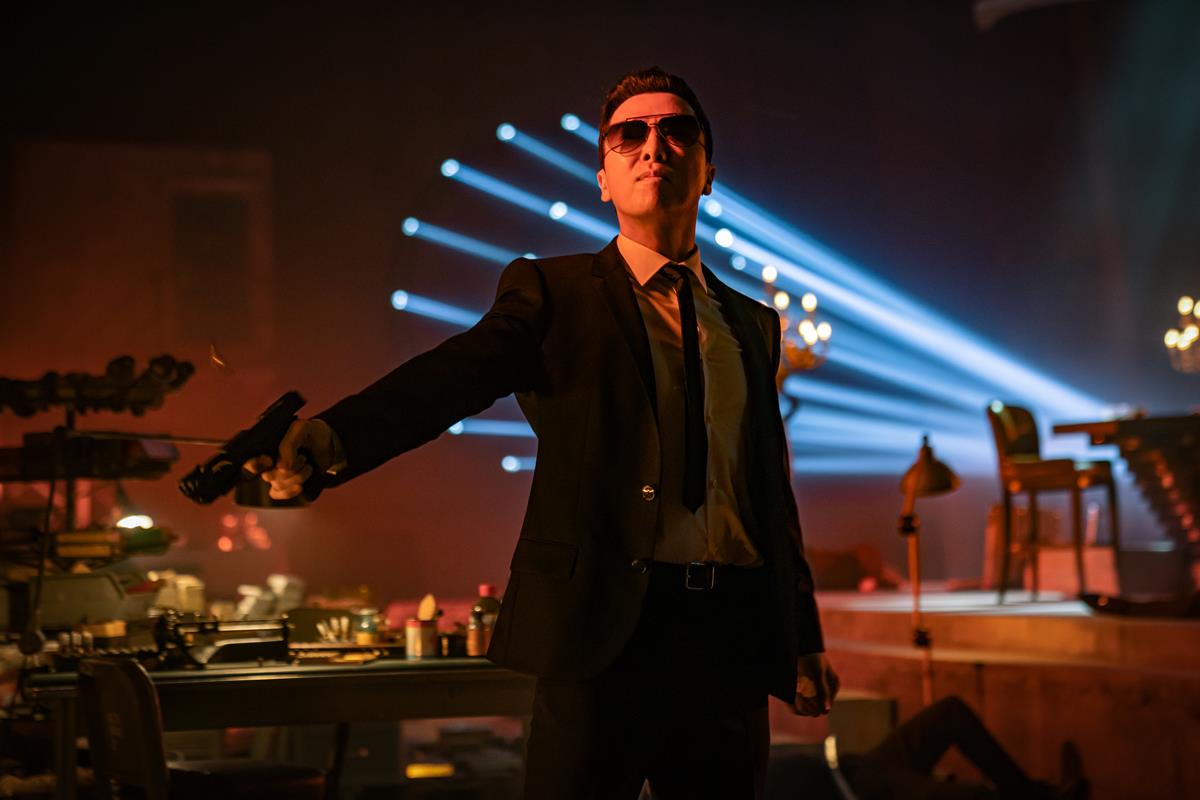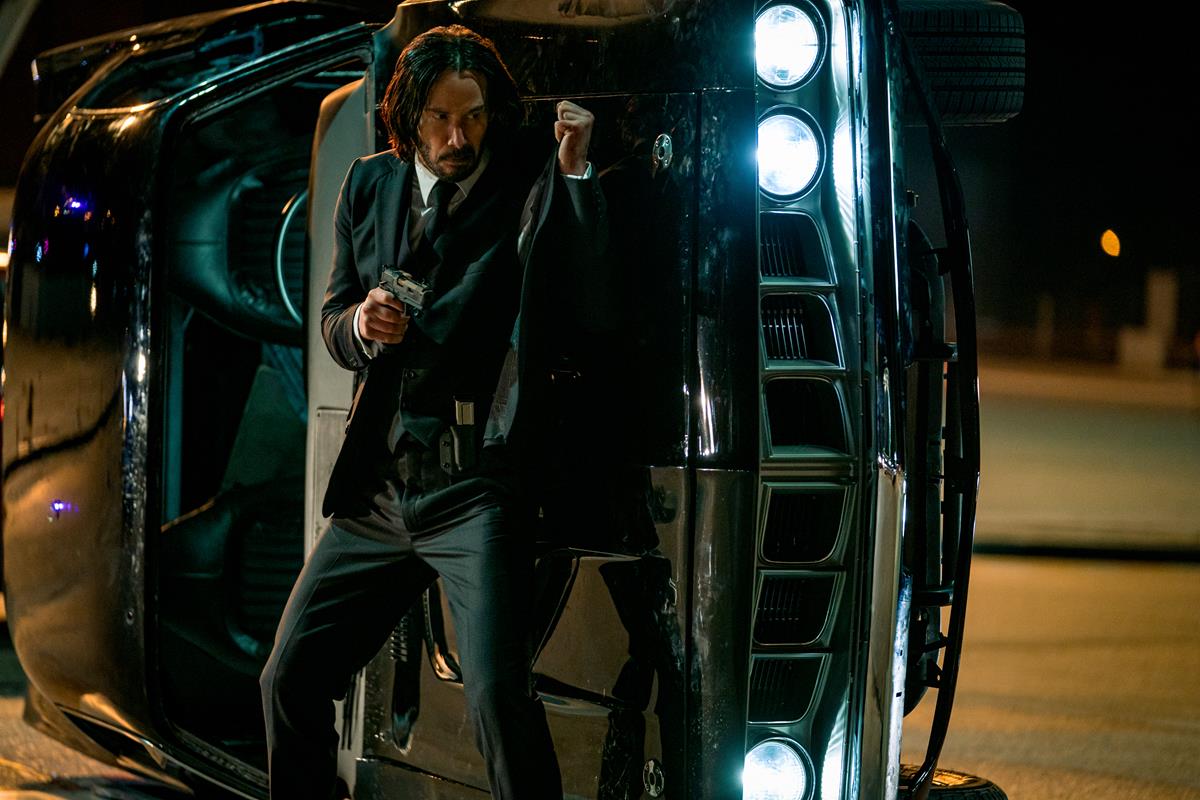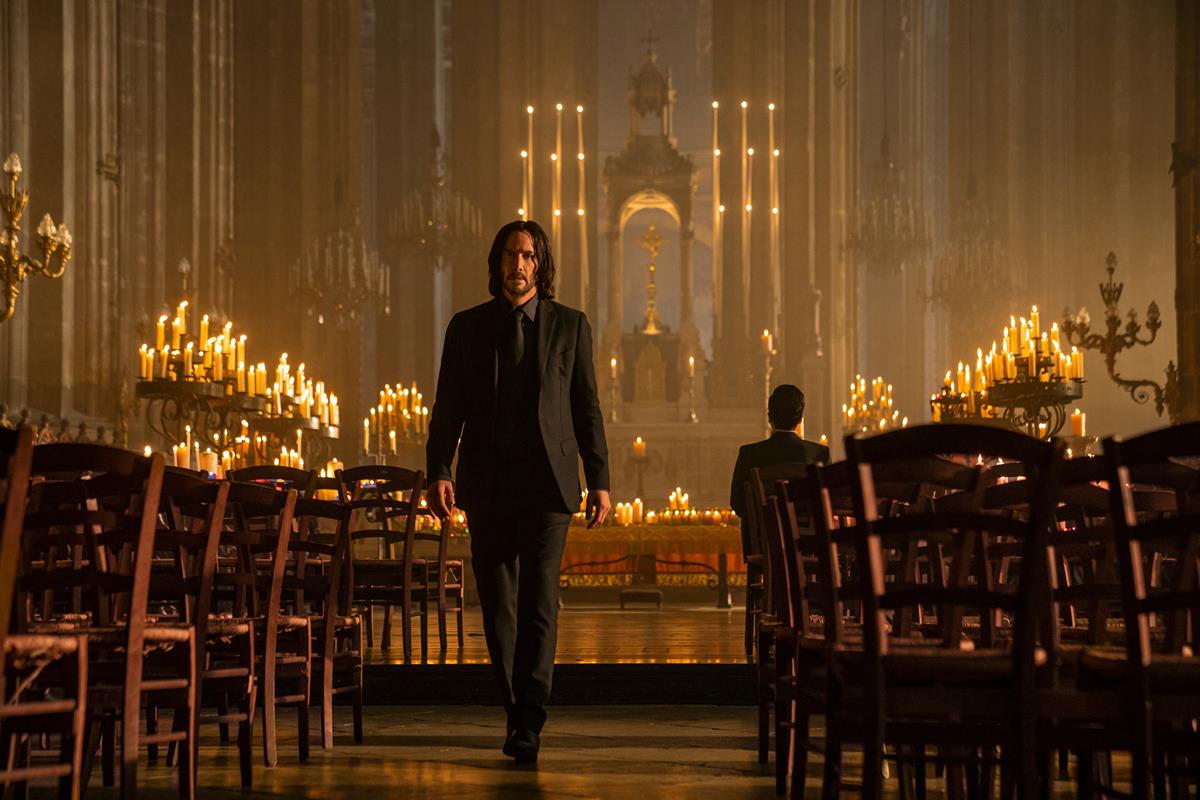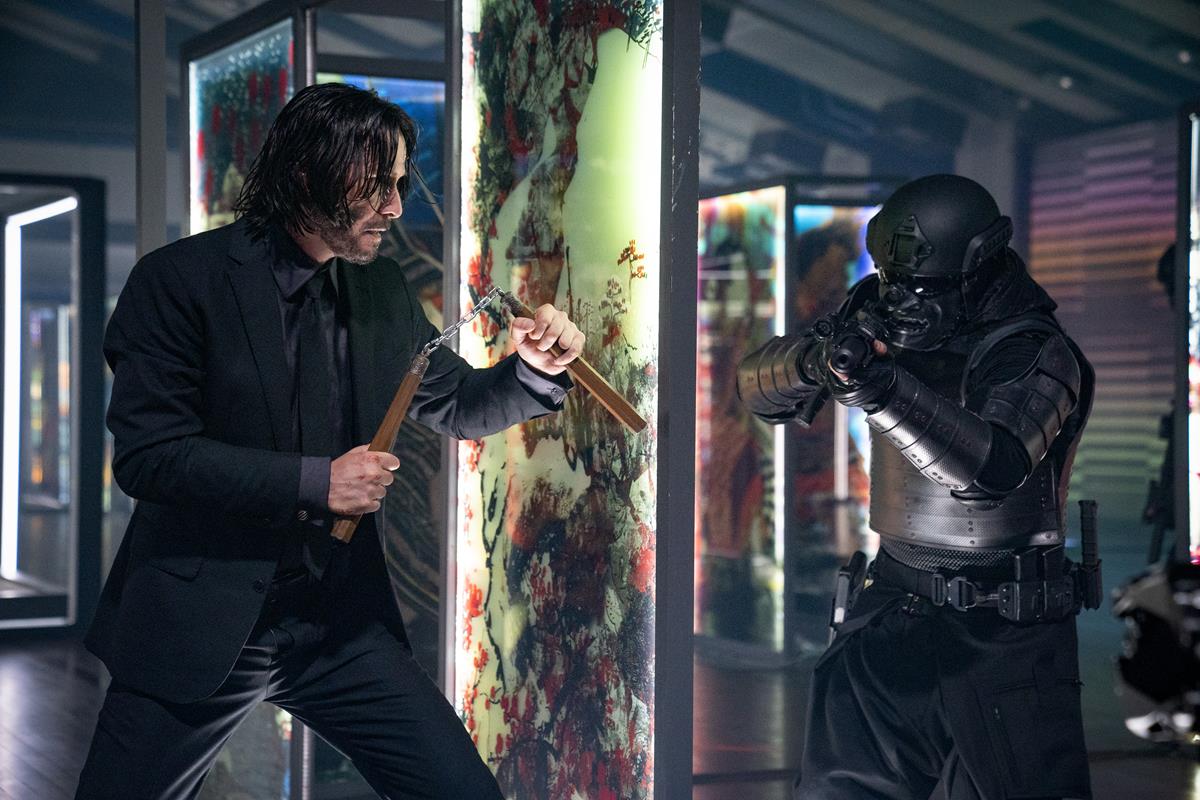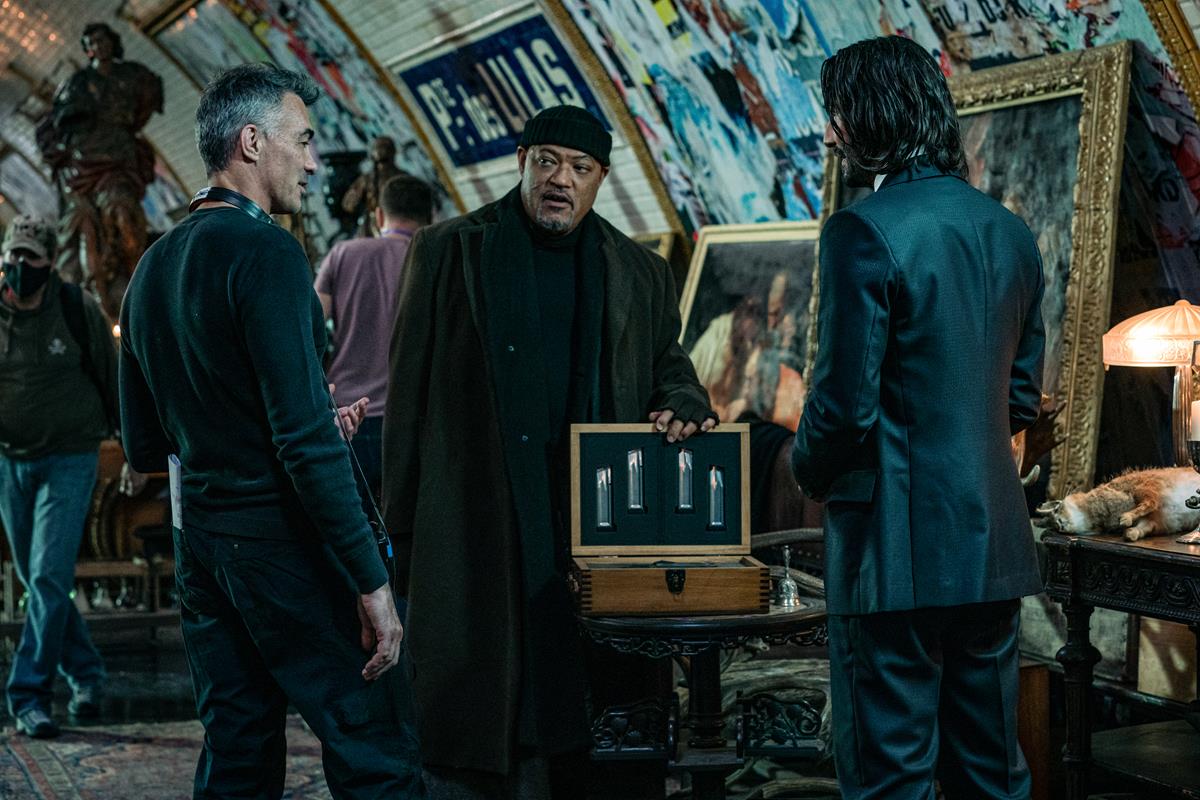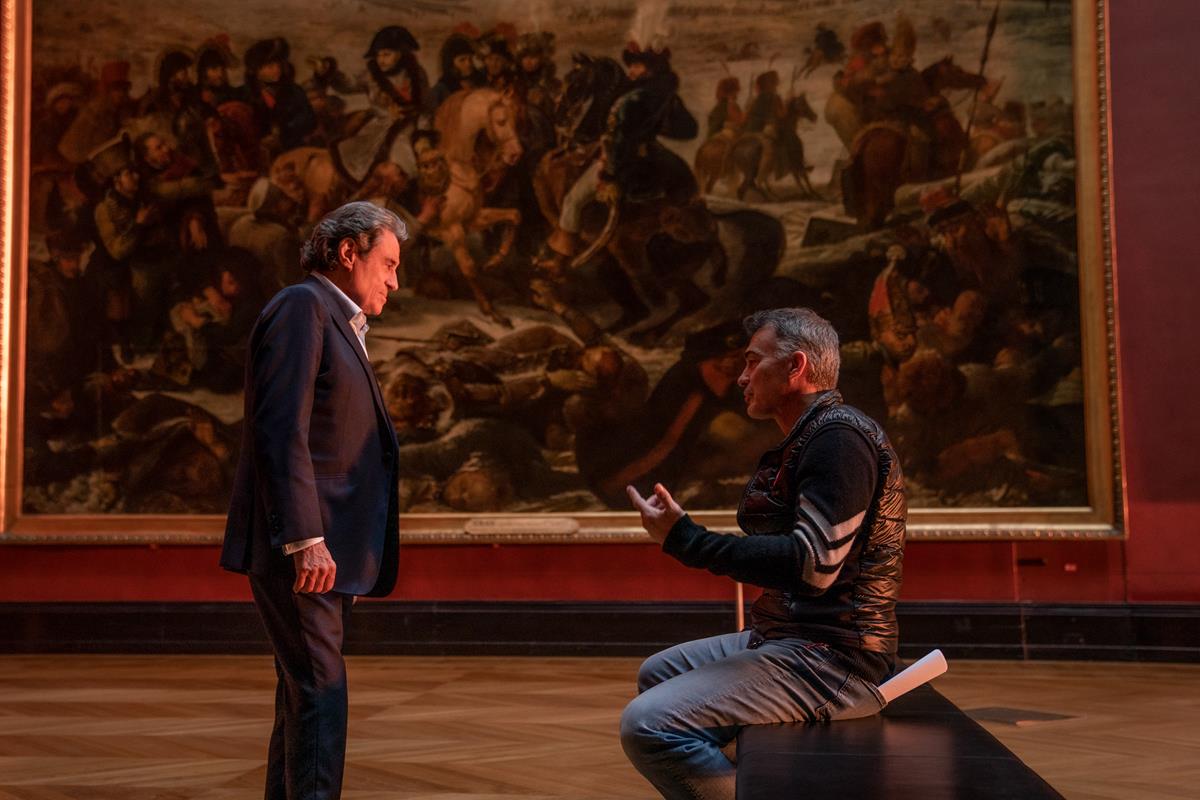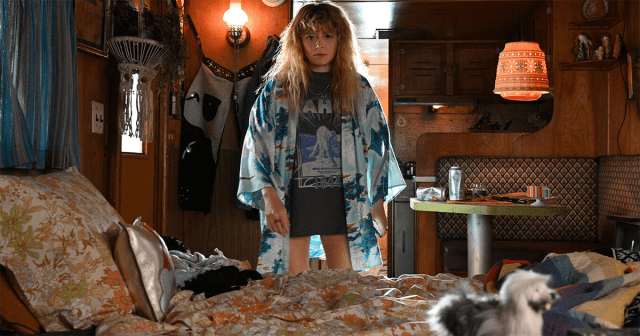TL;DR
- Director Chad Stahelski wanted to work with an editor who came with no preconceptions about how a John Wick action film should be put together.
- Editor Nathan Orloff talks about being able to accomplish a fantastic rhythm, but over a near three-hour run time.
- Stahelski discusses cinematic influences including “The Good, The Bad and the Ugly” and MGM musicals.
With John Wick 2 and 3 editor Evan Schiff unavailable, franchise director and co-creator Chad Stahelski cast around for a new cutting room collaborator for Chapter 4. He alighted on Nathan Orloff (Ghostbusters: Afterlife), in part because Orloff had limited experience editing action movies.
“In my interview with Chad, we just really hit it off,” Orloff explains on the Next Best Picture podcast. “I found out many months later that one of the reasons he wanted to bring me on is because I don’t have extensive experience in action. He didn’t want someone to come in and do their thing that they’ve been doing on other action movies… because John Wick is sort of antithetical to how a lot of action movies are cut these days.”
READ MORE: The Next Best Picture Podcast – Interview With “John Wick: Chapter 4” Editor Nathan Orloff (The Next Best Picture)
To understand why, you have to appreciate that Stahelski’s vision for the fourth installment in the franchise was to expand the John Wick universe by bringing in multiple storylines and a longer run-time to let the action play out on screen, rather than having the editing dictate the action.
“The other films are very much like, you know, that John is on a direct rampage or running for his life. This film was intentionally designed to be more reflective and contemplating, that after his entire career as a hitman, he is forced to reckon with his past and what he’s done.”
Stahelski’s influences range from the lush visuals of Wong Kar-wei to the operatic staging of Sergio Leone westerns. As the director explained to Jim Hemphill at IndieWire: “I love the seventies movie style. I love four act operas. I love Kabuki theater. The Asian cinema kind of breaks a lot of rules that we adhere to in the three act version [of movies] and we’d like to think John Wick breaks a lot of those rules because we do go a little operatic.
“Lawrence of Arabia is a good example like that. That movie kind of flies by to me and it doesn’t feel like you need an intermission in it.”
The filmmaker’s homage goes so far as to mimic the famous “match cut” by editor Ann V Coates in David Lean’s Lawrence of Arabia in which Lawrence in profile blows out a match and Coates cuts to a blazing desert sunrise.
“I remember vividly when I went to set in Paris, Chad asked me ‘what’s the most famous cut in all of cinema?’ and said we’re going to do it our way,” Orloff relates to Next Best Picture. “I wanted to make sure we did the exact number of frames when the fire was blown out before cutting to the sunrise. You know, I wanted to do it justice.
“He told me he’d rather swing and miss than do the same thing over again. And so that match cut is indicative of [telling the] audience what we’re going for.”
Another acknowledged influence on the director’s action style are classic MGM musicals or those featuring Fred Astaire. In films like Singing In The Rain or Top Hat the camera stays generally static and in wide shot with minimal edits so the viewer can take in all the dancing brilliance performed by the film’s stars.
“I love Bob Fosse here, one of my huge inspirations,” Stahelski tells Indiewire. “You take Gene Kelly, the old Sunday Morning Sunday Parade or something like that. You watch Fred Astaire do his thing. And if you watch the way we shoot, it’s very simple. The way we train people [to perform stunts] is very, very, very dance oriented.”
READ MORE: How Gene Kelly and ‘Singin’ in the Rain’ Taught John Wick to Fight (IndieWire)
Orloff elaborates on what this means to decisions in the cutting room.
“Musicals like back then were sort of like you edited around the dancing,” he says on an episode of The Rough Cut podcast. “You showed them dancing. They would do a move, finish, cut, start something else. And the way Chad talked about that really inspired me to do that with our characters and not use the editing to try to punch anything up.”
There are times when the stunt performance or that of Keanu Reeves aren’t quite perfect “they slip or there’s something not great about the timing of this or that, but not being so obsessive about perfection makes it just so much more real. When you’re cutting less, you’re able to absorb everything more. You feel more empathy for the characters because you feel like you’re just there.”
John Wick: Chapter 4 clocks in at 169 minutes, more than an hour longer than the original. Stahelski explains why he wanted a movie of this length.
“In our heads we knew that we wanted to show this constant decreasing circle that spirals closer and closer as [the stories] come together. So every act brings us closer together. That was the plan. It sounds like a very genius plan, but you don’t know until you cut the whole thing together. Our first cut was 3 hours 45 minutes.”
So how did the edit team set about cutting that down, and knowing which killing to leave in or excise?
“When you have 14 action sequences, you can’t just edit that sequence,” the director explained. “You’ll never know if a five minute car scene or a ten minute car scene is good to watch in the two and a half hour movie.
So the only way to truly know that you’re doing the right thing is step back and take that half day. We’d edit all morning but by four p.m. we’re like, Let’s watch the movie. And my editorial staff probably hates me. We’ve watched it so many times because literally even if we just took like 30 seconds out of something, I’d make everybody watch the movie again, because that’s the only way you know, you have the right pace.
He adds, “It’s the whole song that makes you rock out. I think that was a big learning experience with me and my editorial team to constantly watch a two and five hour movie and feel where the slow parts were and to work on those parts.”
Because John Wick is dispatching henchmen left and right in intricately planned and executed stunts, making the decision about what to cut was a tricky one admits the editor.
“There is definitely sometimes overkill when something is too similar to something else,” Orloff told Next Best Picture, “but going back to the music was a huge help in creating different tones and alternating what we were doing to avoid the things feeling the same. And to Chad’s credit, especially in the last act when we go from street fight to a car chase to a lengthy overhead shot that, even though the audience has watched non-stop action for 30-45 minutes the movie is structured so skillfully that you’re seeing something you’ve never seen before.”


